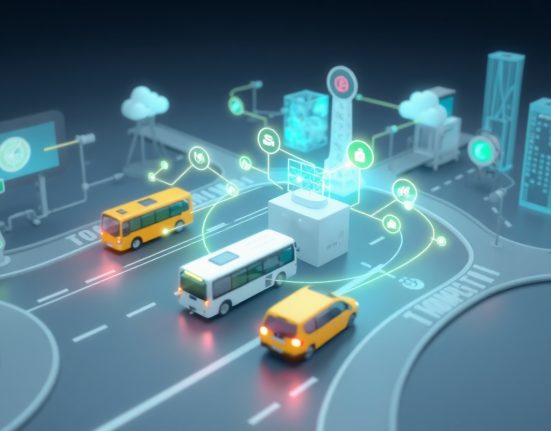Introduction
Technology industries currently represent one of the most significant growth engines of the global economy. What began as a small computer industry a few decades ago has evolved into a wide range of sectors affecting every aspect of our lives – from how we communicate, work, and learn to how we receive medical care. This article examines the key sectors in the technology industry, leading trends, challenges facing the industry, and opportunities for the future.
Key Sectors in the Technology Industry
1. Hardware and Computing
The heart of the technology industry relies on hardware manufacturing – computers, chips, electronic components, communication equipment, and smart devices. Companies like Intel, TSMC, Apple, Samsung, and NVIDIA lead in the production of chips, processors, and physical devices that enable the digital revolution.
Notable trends in this field include:
- Advancements in chip technology and component miniaturization
- Transition to new computing architectures (such as quantum computing)
- Development of low-energy consumption devices
- Integration of artificial intelligence at the hardware level
2. Software and Cloud Services
The software industry focuses on developing operating systems, applications, games, and enterprise software. In parallel, cloud services provide computing infrastructure, development platforms, and Software as a Service (SaaS). Companies such as Microsoft, Amazon (AWS), Google, Salesforce, Oracle, and SAP lead the field.
Notable trends:
- Transition of business models to subscription-based services
- Accelerated development of cloud-based solutions
- Development of rapid development tools (low-code/no-code)
- Automation in software development (DevOps, CI/CD)
3. Telecommunications and Network Infrastructure
The telecommunications and network infrastructure industry provides the critical infrastructure that enables the global connectivity upon which other technology industries rely. Companies like AT&T, Verizon, Vodafone, Huawei, Nokia, and Cisco lead in this area.
Notable trends:
- Deployment of 5G networks and preparations for 6G
- Development of fiber optic infrastructure
- Space connectivity (satellites, Starlink)
- Software-defined networks (SDN) and network function virtualization
4. Digital Media and Entertainment
Technology has completely transformed the media and entertainment industry, with a shift from traditional content consumption to streaming services, social networks, and video games. Companies like Netflix, Disney+, Meta (formerly Facebook), TikTok, and Electronic Arts lead this revolution.
Notable trends:
- Content personalization through algorithms and artificial intelligence
- Development of virtual reality (VR) and augmented reality (AR) technologies
- Integration of metaverse experiences
- AI-powered content creation
5. FinTech (Financial Technology)
The FinTech sector is changing how we manage finances, make payments, and invest. Companies like PayPal, Square (Block), Stripe, Robinhood, and digital banks are leading innovation in this field.
Notable trends:
- Development of digital payment systems
- Open banking and embedded financial services
- Blockchain technology and digital currencies
- Algorithms for investment management and automated trading
6. HealthTech
Health technologies connect technological innovation with medicine and healthcare, aiming to improve treatment outcomes, increase accessibility, and reduce costs.
Notable trends:
- Data-driven personalized medicine
- Smart connected medical devices (IoMT – Internet of Medical Things)
- Telemedicine and remote healthcare services
- AI applications for diagnosis and drug development
7. EdTech (Education Technology)
Education technologies focus on improving learning, teaching, and training processes through digital solutions.
Notable trends:
- Online learning platforms and learning management systems
- Personalized learning through artificial intelligence
- Online professional training and microlearning
- VR/AR technologies in education and training
Key Trends Shaping Technology Industries
1. Artificial Intelligence and Machine Learning
Artificial Intelligence (AI) and Machine Learning (ML) currently represent one of the most significant innovation drivers in the industry. Generative models like OpenAI’s ChatGPT, Google’s Gemini, and Anthropic’s Claude are transforming entire industries. AI is now integrated into a wide range of products and services – from virtual assistants to advanced decision support systems.
Key impacts:
- Automation of complex tasks and processes
- Prediction of trends and insights from complex data
- Enhancement of creation capabilities and problem-solving
- Fundamental changes in the job market and required skills
2. Internet of Things (IoT)
The Internet of Things (IoT) refers to the vast network of connected devices – from home consumer devices to industrial sensors. IoT enables data collection, remote monitoring, and automation at an unprecedented level.
Key impacts:
- Development of smart cities and connected infrastructure
- Energy efficiency and environmental monitoring
- Improvement of manufacturing processes and supply chains
- Growing security and privacy challenges
3. Quantum Computing
Quantum computing represents a potential breakthrough that could fundamentally change global computing capabilities. Companies like IBM, Google, Microsoft, and IonQ are leading the race to develop practical quantum computers.
Potential impacts:
- Breakthrough ability to solve complex problems (optimization, simulations)
- Transformation of cryptography and information security
- Development of new drugs and products through molecular simulations
- Acceleration of artificial intelligence development
4. Cybersecurity and Privacy
With the accelerated development of technology, cybersecurity and privacy protection have become critical fields. Cyber threats are becoming increasingly sophisticated, alongside stricter regulations such as the European GDPR.
Notable trends:
- Identity-based security approaches and Zero Trust
- AI security and protection against AI attacks
- Privacy by Design
- Blockchain-based solutions for enhanced security
5. Sustainability and Green Technology
The technology industry is increasingly turning to environmentally friendly solutions in response to the climate crisis and consumer demands.
Notable trends:
- Energy-efficient data centers
- Development of environmentally friendly hardware and batteries
- Supply chain optimization through technology
- AI applications for monitoring and improving environmental performance
Challenges and Risks
1. Digital Divides and Inclusion
Despite technological advancement, significant gaps still exist in access to technology and digital literacy. A central challenge is ensuring that technological progress is inclusive and benefits the entire population.
2. Regulation and Ethics
As technology advances, complex ethical questions and regulatory challenges arise. Issues such as algorithmic responsibility, AI biases, and impact on privacy are at the center of public discussions.
3. Sophisticated Cyber Threats
As technology becomes more central to our lives, so does the potential threat from cyber attacks. Ransomware attacks, identity theft, and threats to critical infrastructure pose significant challenges.
4. Changes in the Job Market
Automation and artificial intelligence are changing the job market, making certain roles obsolete and creating demand for new skills. Retraining and adapting education systems to changing requirements pose a central challenge.
5. Centralization and Competitiveness
Large technology companies have accumulated significant power, raising concerns about market competitiveness, innovation, and democratic oversight.
Opportunities for the Future
1. Digital Transformation of Traditional Industries
Established industries such as agriculture, construction, transportation, and traditional manufacturing are in the midst of a digital transformation process, offering numerous opportunities for innovation and growth.
2. Solutions to Global Challenges
Technology offers opportunities to address global challenges such as climate change, resource scarcity, public health, and social gaps.
3. Development of Local Technology Ecosystems
Beyond traditional technology centers, we are witnessing the growth of innovation centers worldwide, leading to a distribution of opportunities and technology impact.
4. Technology Convergence
The combination of fields such as AI, biotechnology, nanotechnology, and brain-computer interfaces offers breakthrough opportunities to create innovative solutions.
5. Creator Economy and Democratization of Technology
More accessible technological tools allow independent creators, entrepreneurs, and innovators to participate in the digital economy in ways that were not previously possible.
Conclusion
Technology industries are in a period of accelerated change, bringing unprecedented challenges and opportunities. The key to success in this era lies in the ability to balance innovation with responsibility, economic growth with social inclusion, and technological progress with human values.
Companies, governments, and civil society need to collaborate to ensure that technology serves the broader goals of human society – creating a sustainable, fair, and prosperous future for all. The current period is not just an era of technological revolution but also an opportunity to reshape the relationships between technology, society, economy, and environment.














